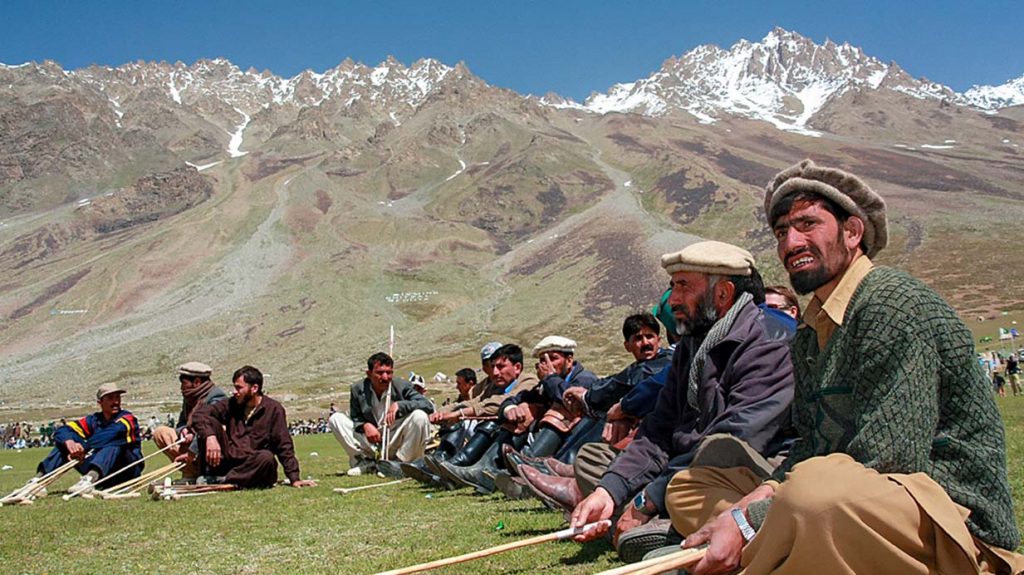The strategically important Gilgit-Baltistan (GB) is dominating the news not because of its scenic beauty but because of sectarian tension. Unrest and unknown fear have been prevailing across the region for a couple of weeks due to inflammatory statements from both sides. It is believed that Islam came to the Gilgit region in the 12th century through Sufi saints. One Sufi saint, Shah Burya Wali, came to Nagar from Kashmir and preached Islam in the surrounding areas. In the case of Baltistan, the credit goes to Syed Ali Hamdani, who came to Baltistan in 1379 AD, followed by Syed Muhammad Noor Baksh. It was Mir Shamsuddin Iraqi who spread his beliefs in Khaplu, creating the ‘Noor Bakshi’ sect. In the cases of Chilas, Darel, and Tangier, Islam came from Dir, Kaghan, and Kohistan.
The region remained under the influence of Syeds, Pashtuns, and Kohistanis, who preached Islam here. According to historian Dr. Dani, ruler of Badakhshan Tajuddin, the Mughals invaded Gilgit twice and conquered areas that are now part of Ghizer, Gilgit, and Hunza. He preached Ismailism in the region, and even the ruler of Gilgit at that time accepted his influence. Remains of a tower built by Taj Mughal can be seen in Jutial.
The region of Gilgit-Baltistan has a population of 15 lacs, divided into two regions, Gilgit and Baltistan comprising ten districts. The Sunnis and Shias share the Islam’s fundamental principles based on the Tauheed, The Holy Prophet (PBUH), and the Quran. Until the 1970s, both communities lived in complete harmony. In 1972, major administrative changes were made in the region which included abolishing the agency system, abolishing states of Hunza and Nagar, the FCR and the state subject rule.
Historically, people respected each other’s beliefs and even participated in each other’s religious activities. The people also connected with each other through inter marriages. Today one can find several families in the Gilgit region having family members belonging to different sects. Historically, ethnic and tribal loyalties were more important than sectarian identities. All the sects in the region fought for the liberation of Gilgit-Baltistan together. The Sunni-Shia long standing peace was shattered in 1983, 1988 and 2005. Resultantly, both Shias and Sunnis signed a peace agreement achieved through the efforts of a grand Jigra facilitated by the Northern Areas Legislative Council (NALC). Unfortunately, the violence which was sporadic after 1988 became regular after 2005.
During the recent years, positive developments were observed particularly in the Gilgit region. Leading Shia ulema attended the Tableekh Ijtimah in Chilas and leading ulema under Agha Rahat-ul-Hussaini attended the Tableekhi Ijtima in Gilgit. Similarly, the Sunnis arranged Sabeel during Ashura processions. These noble gestures were augmented by Qazi Nisar Ahmed’s statement that he is determined to maintain peace in the region along with Shia brothers.
These were some positive gestures for the promotion of peaceful coexistence and sectarian harmony. The people of Gilgit-Baltistan must understand that our enemies will take advantage of ongoing tension and the emotionally charged atmosphere. A number of efforts have been launched since the 1988 tragedy involving the ulema and members of civil society from all the communities. The hostile agencies can exploit the sectarian fault-lines as any odd incident can trigger sectarian unrest.
Therefore, considering the region’s troubled history, the situation has the potential to deteriorate. Unfortunately, sectarian violence is often triggered by random events such as inflammatory speeches and by use of social media. Dialogue between the both groups is a necessity to remove widespread misunderstandings. Internal and external threats to the peace to the region could be thwarted through harmony. The time has come that all the stakeholders in the region need to address the issue in a holistic manner to find a lasting solution.
The Gilgit-Baltistan government should establish its writ by taking strict action against those who disturb peace. The message to the people of Gilgit-Baltistan is to work together for peace and prosperity in the region. Sectarian harmony is the need of the hour and it should be maintained.




